Mechanical Engineering - Moving Humanity Forward - Steemkidss Engineering Course Introduction, Season 1: Tutorial 3 by @cryptogecko
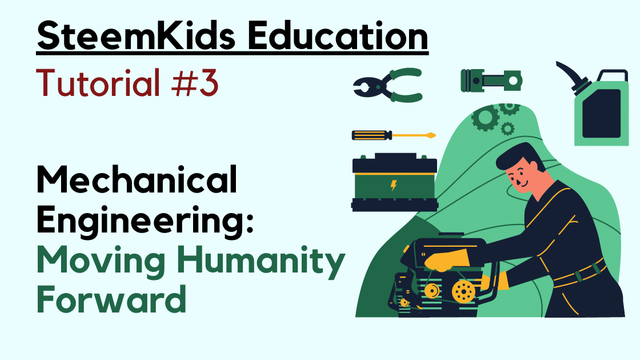
Namaste Steem Family, and my greetings to all my students who attend my lessons.
During the last lesson, you learned about the Civil engineering branch of engineering, which has had a huge impact on human history since its creation, and is believed to be the first branch of engineering. Today, we are going to cover the mechanical branch of engineering in this lesson. Now let us get started.
Introduction
The field of mechanical engineering has made a significant contribution towards changing the world in which we live today. In fact, one could even say that they have had a profound influence over the course of human history to an extreme extent. As a matter of fact, they have done this countless times throughout the history of mankind, and not just once.
In order to achieve this, they had to identify the barriers that hindered mankind's advancement and to find solutions that would enable humanity to make significant progress. A number of items, for instance, were too heavy and large to be moved. Additionally, traveling was an extremely difficult and time-consuming endeavor.
I believe there is a good chance that you can think of an invention that revolutionized the way people live today, and the most likely candidate to be the creator is someone who works in the field of mechanical engineering.
It is worth mentioning that I am very neutral in my views, so expressing this opinion does not in any way constitute a bias.
Humble Beginnings of Mechanical Engineering
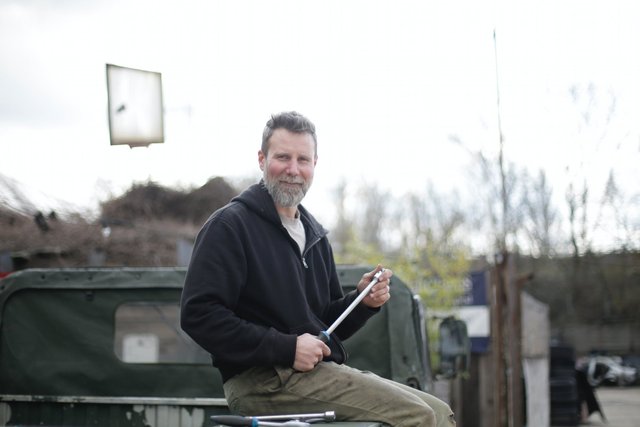
A mechanical engineer is an engineer who is involved in the design, construction, operation, and maintenance of machine movements, in other words, he or she is an engineer who deals with the design, construction, operation, and maintenance of mechanical systems and machines. Since the advent of mechanical engineering, it has overcome many challenges and has managed to find solutions to a multitude of problems.
Even though it is impossible to give you a comprehensive list of all the examples that have been made, let's take a moment to consider such things as steam engines, planes, robots, and biomechanical suits, just to name a few. Each of these devices was created by engineers who were able to solve complex problems in a creative and innovative manner. Of course, there were some difficulties in the beginning before they were able to produce a successful product.
As a matter of fact, in the past there was no other travel option except riding a horse or walking. Moreover, you will have to use a carriage if you had a heavy object you wished to transport with you. In this case, wheels made the process easier.
The beginnings of mechanical engineering in history can not be precisely pinpointed to a particular moment in time. It can be argued that its invention can be traced back to the invention of the wheel, followed by the discovery of simple tools that went into making the carriages themselves. During the early days of mechanical engineering, levers were used to open gates, raise and lower bridges, so we would have had a great foundation for early mechanical engineering. Although this was a primitive form of mechanical engineering. In particular, a horse-drawn carriage, since they are drawn by horses, do not have the best speed.
If you assume that you could cover 80 kilometers per day, it would be a generous assumption, since horses require lots of rest and food to function properly. It was a problem that engineers had to deal with in the past. As the world began to expand, traveling a great distance in a short time became more important and increasingly desirable. Unfortunately, horses were unable to keep up with this.
It was necessary to find an alternative that was faster. For the purpose of accomplishing this objective, an engine was needed.
Inventions by Mechanical Engineers
During the early 18th century, steam engines played an important role in the development of mechanical engineering and played an important role in revolutionizing society.
Back when steam engines were first invented, it was predicted that a steam engine could handle the same amount of work as ten, fifteen, or even twenty horses. It would also mean that one does not need to worry about hay or manure anymore. Continuing along the path of historical development, let me now turn to Thomas Newcomen, the British inventor who was the first person to develop a steam engine with a piston.

In his design, atmospheric pressure acted to pressurize the piston downwards after condensation of steam had created a vacuum inside the cylinder. In the beginning, it was used to draw water from the Cornish tin mines after Newcomen realized that horses were too expensive for pumping water. However, it would be James Watt who changed everything.
The first time Watt repaired one of Newcomen's engines in 1763, he realized almost three-quarters of the steam's energy was being wasted and that the steam was only being used to heat the engine's chamber. It was ultimately decided that he would use a separate condenser to resolve the problem. For the condensed steam not to be wasted at the end of the process, it would be condensed in a chamber separate from the piston chamber.
Separating the two processes ensured that rotary motion would continue, which was crucial for maintaining a reliable power supply. It was Watt's invention that operated the machines in the factories that drove the Industrial Revolution. In recognition of Watt, Westminster Abbey erected a large, white marble statue in his honor, the first of its kind to honor an engineer.
An additional honor was the recognition of a unit of power in his last name, a distinction that was perhaps the greatest an engineer could achieve. The steam engine was, however, able to establish itself and prosper largely in the sphere of transportation. In the year 1825, 450 passengers were transported by the first public passenger train at a speed of 24 kilometers per hour.
Compared to horses, that is quite fast, isn't it? Even though wheeled vehicles made travel on land more rapid, there were still many obstacles to transportation, such as bodies of water and rough, mountainous terrain. All of this might be avoided if engineers were able to develop the technology to enable people to fly.
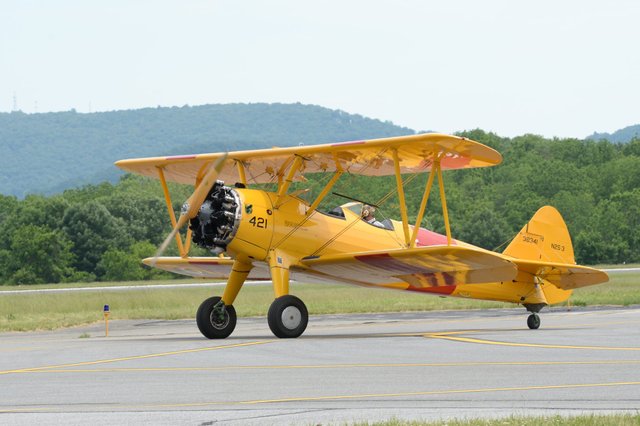
It was through this process of problem-solving that the airplane was created. In 1903, Orville and Wilbur Wright designed and constructed the Wright Flyer, which was the first powered aircraft to fly. Its gas engine provided a power of 12 horsepower. The Wright Flyer was first flown by Orville Wright in its maiden voyage, covering 36 meters in 12 seconds.
The best flight of the day was made by Wilbur, who recorded 255 meters in 59 seconds, or an average speed of about 15 kilometers per hour. This remarkable feat earned him some serious bragging rights for the day.
World War I followed immediately after the Wright brothers' accomplishment, resulting in an explosion of innovative aircraft development. As a result of this rapid development, engineers began to use metal in airplane structures and improved engines that enabled faster speeds and higher altitudes to be reached.
Thereafter, Sir Frank Whittle obtained his first patent for a turbojet engine in 1930. Despite this, it was not until the outbreak of World War II that the British government became interested in supporting his work.
In comparison to the previous models, new jet engines were more efficient, greater in power, faster, and cheaper. As a result of these technological advancements, commercial air travel became a reality, and people soon began to travel in areas that had been dominated by birds. The power of this technological advancement was not limited to the air, however!
In addition to planes, we have launched thousands of satellites into space, sent astronauts to the moon, and carried rovers to Mars aboard spacecraft. It was the field of mechanical engineering that provided the basis for engineering in the aerospace industry. The field of robotics is also a significant part of mechanical engineering. It allows us to make mechanisms that move us, as well as the machines that allow us to build these things.
In our industrial history, human beings have led the way as an integral and important component of the workforce. The capabilities of humans, however, do have some limitations. Some objects are extremely large, and it can be difficult to move them. Human hands can also have difficulty performing many tasks with sufficient precision, as they are limited by their size.
It is also common for industrial workers to work under uncomfortable conditions, and can even end up in dangerous circumstances from time to time. One of the most effective ways to solve this problem is by using robotics and automation. During 1960, there appeared a machine called Unimate on the market, that spelled the beginning of the new millennium.
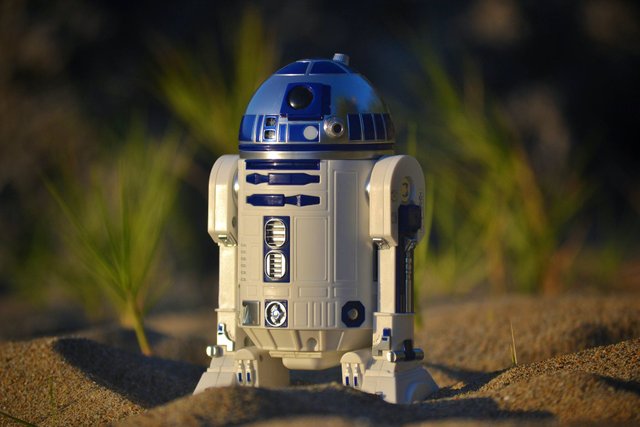
One of the biggest advantages of the robot was its ability to handle materials weighing up to 225 kilograms at high speeds with at least six fully programmable axes of movement.
In the following years, robots have developed into much more than just machines for manufacturing. They have made their way into our households to clean our floors, or even performed surgeries in hospitals. Engineers are becoming increasingly more complex and sophisticated in their applications, which means that they must take into account more and more factors as they design. One of the major concerns they have is how effectively robots can sense and manipulate their environment. They must also consider how well they can perceive their surroundings, how they move, and how they maneuver their environment.
The possibility exists that one day we may be able to have robots working at many of the places where humans might have once worked. In fact, this actually has been happening for a while now.
Humans are just very complex mechanical systems in terms of their structure. When you look at the human body from a structural perspective, you can imagine it as a simple mechanical system composed of joints and links.
The biomechanics has a significant role to play in this regard. Engineers need to ensure that machines modeled after our bodies, are designed and developed in a way that is based on what our bodies can withstand in terms of stress, load, and impact. The field of advanced biomechanics is among the newest branches of mechanical engineering.
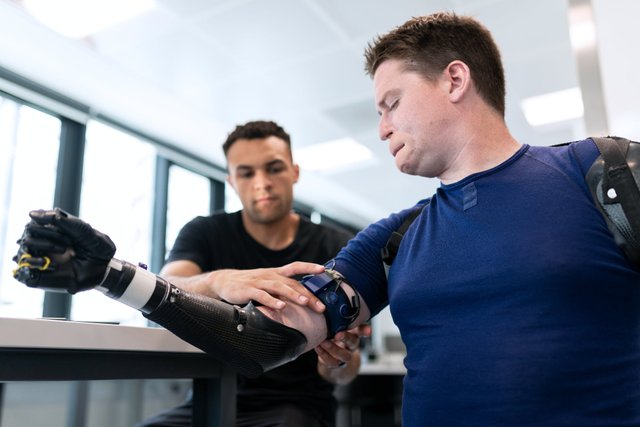
I think we are already observing the beginnings of exoskeleton suits, joint replacements that move like their biological counterparts, and other robotic implants as a consequence of this work. There are numerous projects that are noteworthy, but one stands out above the rest: the Berkeley Lower Extremity Exoskeleton. The Defense Advanced Research Project Agency proudly funded this device in 2000, which provides mechanical support for lifters, which is useful for those who want to give themselves greater freedom to lift greater and heavier loads than they would otherwise be able to do by themselves.
In many instances, carrying heavy loads is quite a challenge for soldiers, and disaster relief workers are often faced with this problem, so finding a solution to this issue is of primary importance. Unfortunately, there are a lot of problems that still exist. Exo-suits have one major problem, however. Power sources are often too heavy or cumbersome for them to be used.
The Berkeley Lab is also involved in a project called the Austin Project, aimed at developing exoskeletons for people with mobility disorders. We have thus come fullcircle from those who developed the first steam engine to replace the horse, to those who are using robotics to simulate the most basic form of transportation: walking. These are some of the most difficult problems that mechanical engineers have been able to overcome.
Conclusion
Whatever problems we still face today - such as congestion on the roads to getting food and water to remote areas - you can be certain that mechanical engineers will be there to tackle these problems with their expertise and skills.
As a result of our lessons today, we learned a great deal about many different aspects of mechanical engineering, starting with the steam engine. From there, we transitioned to aircraft and the work involved in making them. Lastly, we finished this class by diving into the more modern fields of robotics and biomechanics.
What’s Next
I've decided to give you some insight into electrical engineering, its history, and the types of jobs electrical engineers do in the next post.
Homework:
Explore one of the most recent innovations in the field of mechanical engineering and present the details of this innovation to your peers.
Would you consider mechanical engineering to be a field that you would be interested in studying? If so what are some of the aspects you find inspirational in mechanical engineering?
Rules:
- You must be a verified kid (adults are also allowed)
- You must at least write 300 words.
- The post must not be plagiarized.
- Use the tags; #learnwithsteem #assignment #steemexclusive #engineering #country #clubstatus in your tags
I hope you liked this tutorial and please tell me in the comments, what you liked in this tutorial.
Beneficiaries of this post:
- @steemkidss: 30%
- @null: 25%
Thanks so much dear @cryptogecko for this wonderful tutorial. We appreciate all you do for steemkids.
hello teacher thank you so much for this lesson. i have a question do we also have to set beneficiary to steemkidss 30% and null25% .
i know that we have to set 25% to the null but what about the steemkidss please clear my this confusion @cryptogecko
No, you don't need to set 30% beneficiary to SteemKids, this is my way to support the project. You can set whatever beneficiary you like, it is not obligatory action.
Mechanical engineering is a very amazing field of study. Excellent lesson, success for you and all.
Your efforts are appreciated professor. You are doing a great job.
Here is my entry: Link to the entry
my entry link for the homework
https://steemit.com/hive-139765/@ghani12/mechanical-engineering-moving-humanity-forward-steemkidss-engineering-course-introduction-or-by-ghani
Hello teacher it was a great lesson i learnt a lot. here is the submission post of my homework
https://steemit.com/hive-139765/@ikramullah430/mechanical-engineering-moving-humanity-forward-by-ikramullah430